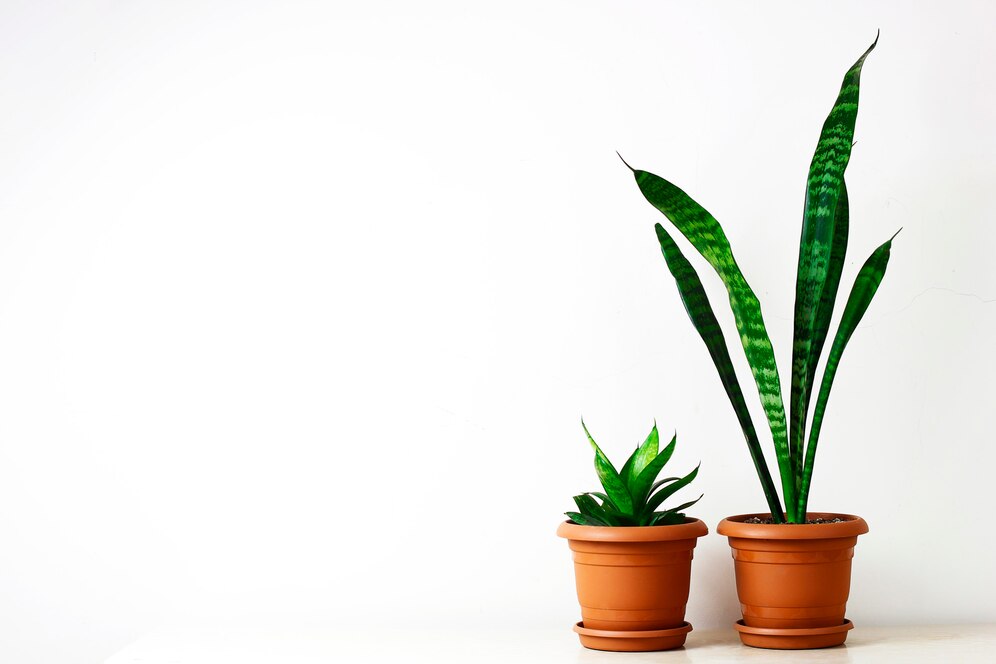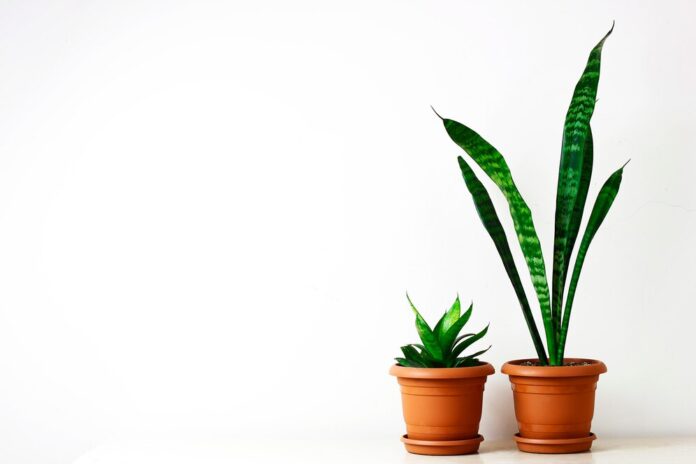Introduction
Indoor plants have become increasingly popular in recent years, and for good reason. Not only do they add a touch of greenery and beauty to any space, but they also offer a range of benefits for our health and well-being. One of the challenges many people face when it comes to indoor plants is finding ones that can thrive in low light conditions. Luckily, there are several tall indoor plants that are well-suited for these environments. In this article, we will explore the top 5 tall indoor plants for low light conditions, their benefits, and tips for caring for them.

Understanding the Benefits of Indoor Plants
Before diving into the specific plants, it’s important to understand the numerous benefits that indoor plants can provide. One of the most well-known benefits is improved air quality. Plants naturally filter the air by absorbing carbon dioxide and releasing oxygen. They also remove toxins and pollutants from the air, helping to create a healthier indoor environment.
In addition to improving air quality, indoor plants have been shown to reduce stress and anxiety. Studies have found that being around plants can lower blood pressure and heart rate, as well as reduce feelings of stress and anxiety. The presence of plants in a space can create a calming and soothing atmosphere, promoting relaxation and well-being.
Furthermore, indoor plants have been found to increase productivity and creativity. Research has shown that having plants in the workplace can improve concentration, memory, and cognitive function. They can also enhance creativity and problem-solving skills. Whether you’re working from home or in an office setting, incorporating indoor plants into your workspace can help boost your productivity and creativity.
Lastly, indoor plants can enhance the decor and aesthetics of any space. They add a natural element and bring life to a room, making it feel more inviting and vibrant. Whether you prefer a minimalist or bohemian style, there are indoor plants that can complement any decor style.
Top 5 Tall Indoor Plants for Low Light Conditions
1. The Majesty Palm: A Tropical Beauty for Your Home
The Majesty Palm (Ravenea rivularis) is a popular choice for those looking to bring a touch of the tropics into their home. It features long, arching fronds that create a dramatic and elegant look. This plant can tolerate low light conditions, although it does best in bright, indirect light. It is important to note that the Majesty Palm requires regular watering and high humidity levels to thrive.
To care for a Majesty Palm, it is recommended to place it near a window with filtered light. Water the plant when the top inch of soil feels dry, and mist the leaves regularly to increase humidity. Fertilize the plant every two to three months during the growing season. With proper care, the Majesty Palm can grow up to 10 feet tall, making it a stunning addition to any room.
Styling ideas for incorporating the Majesty Palm into your home decor include placing it in a large decorative pot and using it as a focal point in a living room or entryway. You can also create a tropical oasis by grouping several Majesty Palms together and adding other tropical plants and accessories.
2. The Snake Plant: A Low-Maintenance Option for Busy Homes
The Snake Plant (Sansevieria) is an excellent choice for those who want a low-maintenance plant that can thrive in low light conditions. It has long, upright leaves that are often variegated with shades of green and yellow. The Snake Plant is known for its air-purifying properties, as it can remove toxins such as formaldehyde and benzene from the air.
One of the benefits of the Snake Plant is its ability to tolerate neglect and low light conditions. It can survive in areas with little natural light, making it ideal for busy homes or offices with limited sunlight. The Snake Plant also has a unique ability to convert carbon dioxide into oxygen at night, making it a great plant for bedrooms.
To care for a Snake Plant, it is important to place it in a well-draining pot and water it sparingly. Snake Plants are drought-tolerant and can withstand periods of neglect, so it is better to underwater than overwater. They prefer indirect light but can also tolerate low light conditions. Avoid placing them in direct sunlight, as this can cause the leaves to burn.
3. The Fiddle Leaf Fig: A Statement Piece for Your Living Room
The Fiddle Leaf Fig (Ficus lyrata) is a popular choice for those looking to make a statement with their indoor plants. It features large, glossy leaves that resemble the shape of a fiddle or violin, hence its name. The Fiddle Leaf Fig is known for its ability to grow tall and create a dramatic focal point in any room.
While the Fiddle Leaf Fig prefers bright, indirect light, it can also tolerate low light conditions. However, it is important to note that it may not grow as quickly or as large in low light environments. This plant requires regular watering and well-draining soil to prevent root rot.
To care for a Fiddle Leaf Fig, place it near a window with filtered light. Water the plant when the top inch of soil feels dry, and be sure to empty any excess water from the saucer to prevent root rot. Fertilize the plant every two to four weeks during the growing season. The Fiddle Leaf Fig can grow up to 10 feet tall with proper care, making it a stunning addition to any living room.
4. The Rubber Plant: A Versatile Addition to Any Room
The Rubber Plant (Ficus elastica) is a versatile indoor plant that can thrive in low light conditions. It features large, glossy leaves that are often dark green or burgundy in color. The Rubber Plant is known for its ability to purify the air and remove toxins such as formaldehyde and benzene.
One of the benefits of the Rubber Plant is its adaptability to different light conditions. While it prefers bright, indirect light, it can also tolerate low light environments. This makes it a great choice for rooms with limited natural light, such as bathrooms or basements. The Rubber Plant also has a high tolerance for neglect and can withstand periods of drought.
To care for a Rubber Plant, place it in a well-draining pot and water it when the top inch of soil feels dry. Avoid overwatering, as this can lead to root rot. The Rubber Plant prefers higher humidity levels, so misting the leaves regularly or placing a humidifier nearby can help promote healthy growth. Fertilize the plant every two to four weeks during the growing season. With proper care, the Rubber Plant can grow up to 10 feet tall, making it a versatile addition to any room.
5. The Dracaena: A Hardy Plant for Low Light Conditions
The Dracaena is a genus of plants that includes several species, all of which are well-suited for low light conditions. They feature long, arching leaves that come in a variety of colors and patterns. The Dracaena is known for its air-purifying properties, as it can remove toxins such as formaldehyde and benzene from the air.
One of the benefits of the Dracaena is its ability to tolerate low light conditions and neglect. It can survive in areas with little natural light and can withstand periods of drought. This makes it an ideal choice for busy homes or offices with limited sunlight.
To care for a Dracaena, place it in a well-draining pot and water it when the top inch of soil feels dry. Avoid overwatering, as this can lead to root rot. The Dracaena prefers indirect light but can also tolerate low light conditions. Avoid placing them in direct sunlight, as this can cause the leaves to burn. Fertilize the plant every two to four weeks during the growing season. With proper care, the Dracaena can grow up to 10 feet tall, making it a hardy plant for low light conditions.
Tips for Caring for Your Indoor Plants
While each plant has its own specific care requirements, there are some general tips that apply to caring for indoor plants:
1. Choose the right pot: Make sure your plant has a well-draining pot that allows excess water to escape. This will prevent root rot and ensure healthy growth.
2. Water sparingly: Most indoor plants prefer to be slightly dry rather than overly wet. Water your plants when the top inch of soil feels dry, and be sure to empty any excess water from the saucer.
3. Provide adequate light: While these plants can tolerate low light conditions, they still need some natural light to thrive. Place them near a window with filtered light or provide artificial lighting if necessary.
4. Monitor humidity levels: Some plants, such as the Majesty Palm and Rubber Plant, prefer higher humidity levels. Misting the leaves regularly or placing a humidifier nearby can help create a more humid environment.
5. Fertilize regularly: Indoor plants benefit from regular fertilization during the growing season. Use a balanced fertilizer and follow the instructions on the packaging.
Styling Your Home with Tall Indoor Plants
Incorporating tall indoor plants into your home decor can add a touch of nature and beauty to any space. Here are some ideas for styling your home with these plants:
1. Create a focal point: Use a tall indoor plant, such as the Fiddle Leaf Fig or Majesty Palm, as a focal point in a living room or entryway. Place it in a decorative pot and position it in a prominent spot to draw attention.
2. Group plants together: Create a tropical oasis by grouping several tall indoor plants together. Mix and match different varieties, such as the Rubber Plant and Dracaena, to create visual interest and texture.
3. Use plant stands or shelves: Elevate your tall indoor plants by placing them on plant stands or shelves. This not only adds height to the plants but also creates a layered and dynamic look.
4. Mix with other decor elements: Pair your tall indoor plants with other decor elements, such as artwork, mirrors, or furniture, to create a cohesive and balanced look. Consider the color and texture of the plants when choosing other decor pieces.
5. Consider the scale of the room: When choosing a tall indoor plant, consider the scale of the room. A large plant may overwhelm a small space, while a small plant may get lost in a large room. Choose a plant that complements the size of the room and fits well within the space.
Final Thoughts: Bringing Nature Indoors with Tall Indoor Plants
In conclusion, incorporating tall indoor plants into your home decor can bring numerous benefits for your health and well-being. Whether you choose the Majesty Palm, Snake Plant, Fiddle Leaf Fig, Rubber Plant, or Dracaena, these plants can thrive in low light conditions and add beauty to any space. By following the care tips provided and styling ideas mentioned, you can create a lush and inviting environment in your home.
Bringing nature indoors with tall indoor plants not only improves air quality and reduces stress but also enhances the overall aesthetics of your space. So why not start incorporating these plants into your home decor today? Whether you have a green thumb or are new to plant care, there is a tall indoor plant that is perfect for you. So go ahead and bring some greenery into your life!


